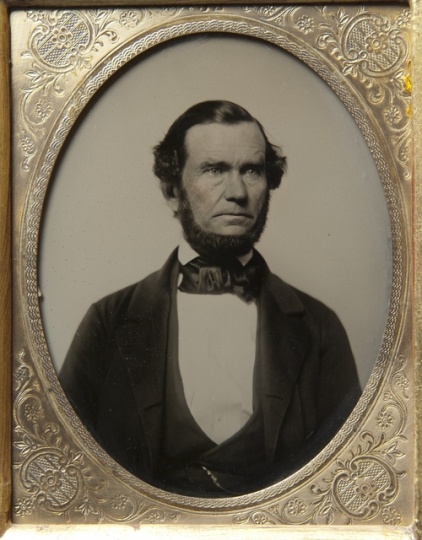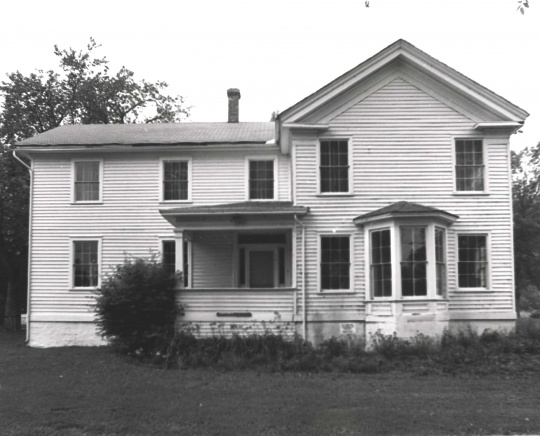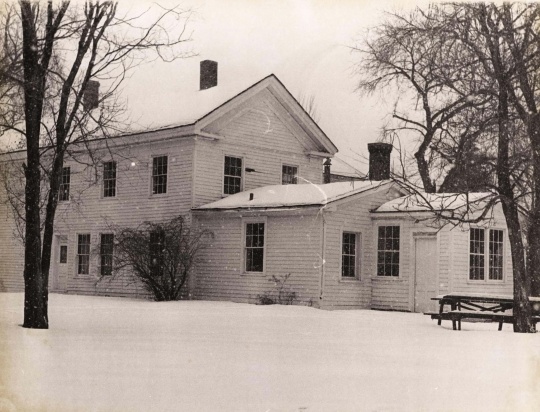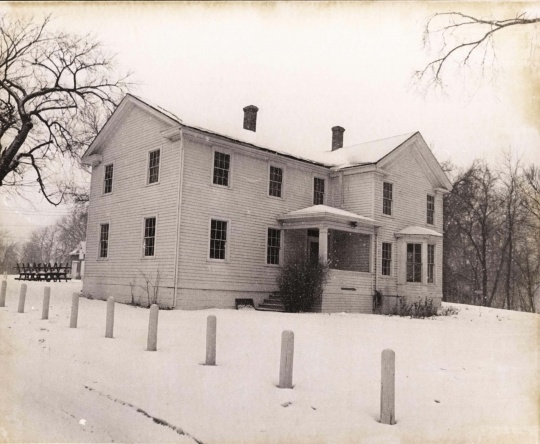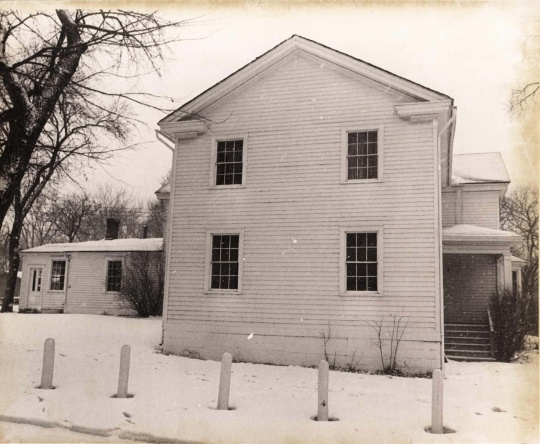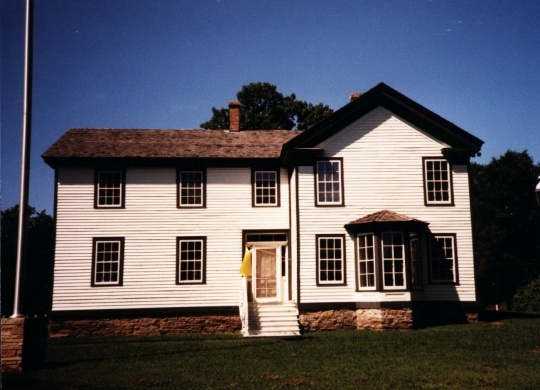The Banfill–Locke House in Anoka County stands on the east bank of the Mississippi River, just outside of downtown Fridley. The property has been used as many things since its original construction in the 1840s, including a tavern, a dairy farm, a private home, and an art gallery. It was added to the National Register of Historic Places in 1976.
Built in 1847 by John Banfill, the Greek Revival-style, two-story Banfill–Locke House initially served as an inn and base for logging operations northwest of St. Anthony Falls. Due to its proximity to Minnesota’s first Territorial Road and the Red River ox-cart trails, the inn became a welcomed wayside rest stop.
Located on a wooded site near the East River Road along Rice Creek, the house features two chimneys, more than two dozen windows, gables with pediments, and a formal entry room with three parts. Its floor plan follows an “L” shape. Its owner, Banfill, was elected to the first Minnesota State Senate in 1848.
An account provided by E. S. Seymour, a visitor to the tavern in 1849, reveals that in its first years of operation, the popular stop lacked adequate stable space. Consequently, many travelers’ horses and mules remained in the open during the winter of 1848–1849. By the time of Seymour’s visit, Banfill had expanded his stall space to accommodate forty horses and mules. Another visitor complimented Banfill on his “good old sparkling Madeira.” Travelers filled the Banfill house every night on their way to destinations along the road, including Fort Gaines (renamed Fort Ripley in 1850), a Chippewa (Ojibwe) Indian Agency, and trading posts, in addition to private homes.
Between 1857 and 1875 it is uncertain who owned the property. In 1876, however, William F. Brown married Laura M. Locke and purchased it. The couple maintained a dairy herd and lived in the house while Brown also worked as postmaster until his death in 1887. His wife and children lived in the house until 1912, when Laura sold it to her brother, Cassius M. Locke.
Locke and his wife, Roberta Pratt Locke, raised registered Jersey dairy cattle on the farm and used it as a summer home. They made a few additions to the house, including front and rear porches, kitchen and bathroom electrical service, a pump, a water closet, and a sewage disposal system. Most of these improvements took place in the 1930s.
Locke died in 1947 and Roberta in 1959. The property remained unoccupied until 1967, when Anoka County purchased it. Currently the Banfill-Locke Center for the Arts uses the facility in support of established and developing artists by hosting speakers, classes, and residents in addition to gallery space.
In 2017, both the interior and exterior of the home remain essentially unaltered. The interior consists of a large communal room on the first floor that contains an entryway, dining room, living room, kitchen, and service room. Seven inter-connected rooms make up the second floor. The entire structure lacks any form of modern central heating. Instead, stoves feeding into three chimneys provide warmth.










